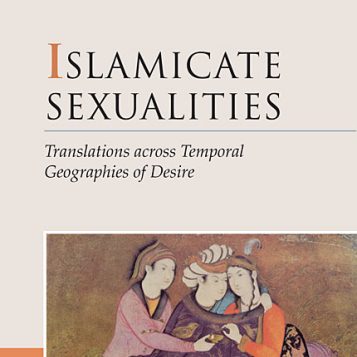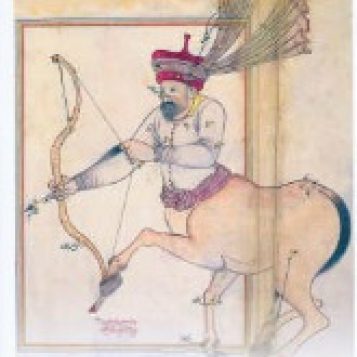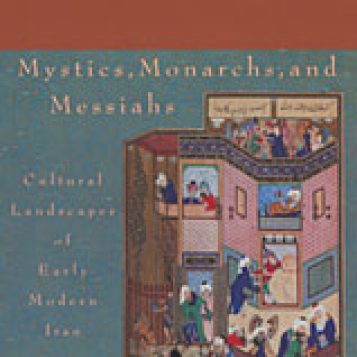Professor
babayan@umich.eduOffice Information:
4012 Thayer Bldg.
phone: 734.763.1597
Middle East ; Medieval & Early Modern Studies; Gender Studies & Sexuality; History
Education/Degree:
PhD Princeton University, 1993About
My expertise lies in the medieval and early-modern Persianate world and focuses on the cultural, social and political histories of Iran, Iraq, Anatolia, and parts of Central Asia, Persian-speaking regions in which Islam was diversely “translated” in the processes of conversion. My scholarship on the Irano-Islamic past has been inspired and broadly informed by critical innovations over the last three decades in the field of cultural studies, and ‘materialist’ modes of analysis that offer new historical approaches to the materiality of human lives as well as the remarkable range of evidentiary materials historians now employ. These groundbreaking innovations in historiography have vitalized my research, which began with a study of religious and political authority in Safavi Iran (1501-1722), and then advanced to a close examination of the ways in which textures of time and being influenced the pre-modern writing of Persianate history and the ritualistic performances of Persianate “memory.” In my first book, Mystics, Messiahs, and Monarchs, I explored the Safavi imperial enterprise’s transformation of eastern Islamdom, in which the memory of a rich pre-Islamic Persian culture converged with Shi‘i strands of Islam, characterized by consummate devotion to Ali and his family.
Drawn to the study of marginal groups in history, I collaborated with three colleagues, Susan Babaie, Massumeh Farhad and Ena Baghdiantz-McCabe to write a volume on slavery in Safavi Iran. Slaves of the Shah combines a multifaceted approach to the study of emerging slave elites in seventeenth-century Isfahan. Each of us individually drew on our disciplinary perspectives (patronage of the arts and architecture, court politics, and trade) to collectively narrate the formation of networks of Armenian and Georgian slaves who shaped the political and cultural life of Safavi Isfahan.
My scholarship has gained much by thinking about gender and sexuality historically. Together with my colleague Afsaneh Najamabadi, we co-edited the volume Islamicate Sexualties. Diverging from the historiographic tradition that has marginalized the constructs of gender and sexuality beyond the concerns of history proper, we invited historians and literary scholars to think about culture and history through the analytical frames of gender and sexuality. The specificity of queering Islamicate history and culture was productive for rethinking tropes for masculinity, pederasty or effeminacy produced by orientalist discourses. Our discussions resulted in a collective reimagining of Islamicate history.
My current book manuscript, The City as Anthology is the first to examine literacy in 17th century Isfahan, the capital of the Safavi dynasty (1501-1722) which declared Shi’ism the religion of state in Iran. Writing experienced a transformation beyond epigraphy and the medium of stone or ceramics onto the surface of a sheet of paper with the assemblage of a new kind of book, the anthology, or majmu’a/muraqqa’. Monumental public writing and the more intimate writing on paper reveal a larger cultural turn towards literacy. Albums of calligraphy, paintings, letters, essays and poetry were produced in households as part of a cultured practice of adab, or etiquette. I am interested in the multiplication of materials, both visual and literary for writing in and about the city. Writing and painting on paper, the attention to subjective knowledge production, and its assemblage into household anthologies represents different ways of experiencing the self in the city. These alternative views of the city disturb the imperial imaginary, thus putting a stress on the effort at ideological unity involved in the royal project of rebuilding Isfahan into an early modern capital.
Affiliation(s)
- Near Eastern Studies
- Armenian Studies
Fields of Study
- Early Modern Iran
- Shi’ism
- Sufism
- Gender and Sexuality
Awards
- 2011-2012 Visiting Fellow, Institute for the Humanities, University of Michigan
- 2008 University of Michigan Humanities Award
- 2006 Rackham Spring/Summer Research Grant
- 2004 Honorable Mention, Said Sirjani Book Award, International Society for Iranian Studies
- May 2000 Visiting Fellow, Ecole des Hautes Etudes en Science Sociales, Paris, France
- 1999–2000 Visiting Fellow, Institute for the Humanities, University of Michigan
Selected Publications:
Books
- (2008) Islamicate Sexualities
- (2004) Slaves of the Shah
- (2002) Mystics, Monarchs and Messiahs
About
My expertise lies in the medieval and early-modern Persianate world and focuses on the cultural, social and political histories of Iran, Iraq, Anatolia, and parts of Central Asia, Persian-speaking regions in which Islam was diversely “translated” in the processes of conversion. My scholarship on the Irano-Islamic past has been inspired and broadly informed by critical innovations over the last three decades in the field of cultural studies, and ‘materialist’ modes of analysis that offer new historical approaches to the materiality of human lives as well as the remarkable range of evidentiary materials historians now employ. These groundbreaking innovations in historiography have vitalized my research, which began with a study of religious and political authority in Safavi Iran (1501-1722), and then advanced to a close examination of the ways in which textures of time and being influenced the pre-modern writing of Persianate history and the ritualistic performances of Persianate “memory.” In my first book, Mystics, Messiahs, and Monarchs, I explored the Safavi imperial enterprise’s transformation of eastern Islamdom, in which the memory of a rich pre-Islamic Persian culture converged with Shi‘i strands of Islam, characterized by consummate devotion to Ali and his family.
Drawn to the study of marginal groups in history, I collaborated with three colleagues, Susan Babaie, Massumeh Farhad and Ena Baghdiantz-McCabe to write a volume on slavery in Safavi Iran. Slaves of the Shah combines a multifaceted approach to the study of emerging slave elites in seventeenth-century Isfahan. Each of us individually drew on our disciplinary perspectives (patronage of the arts and architecture, court politics, and trade) to collectively narrate the formation of networks of Armenian and Georgian slaves who shaped the political and cultural life of Safavi Isfahan.
My scholarship has gained much by thinking about gender and sexuality historically. Together with my colleague Afsaneh Najamabadi, we co-edited the volume Islamicate Sexualties. Diverging from the historiographic tradition that has marginalized the constructs of gender and sexuality beyond the concerns of history proper, we invited historians and literary scholars to think about culture and history through the analytical frames of gender and sexuality. The specificity of queering Islamicate history and culture was productive for rethinking tropes for masculinity, pederasty or effeminacy produced by orientalist discourses. Our discussions resulted in a collective reimagining of Islamicate history.
My current book manuscript, The City as Anthology is the first to examine literacy in 17th century Isfahan, the capital of the Safavi dynasty (1501-1722) which declared Shi’ism the religion of state in Iran. Writing experienced a transformation beyond epigraphy and the medium of stone or ceramics onto the surface of a sheet of paper with the assemblage of a new kind of book, the anthology, or majmu’a/muraqqa’. Monumental public writing and the more intimate writing on paper reveal a larger cultural turn towards literacy. Albums of calligraphy, paintings, letters, essays and poetry were produced in households as part of a cultured practice of adab, or etiquette. I am interested in the multiplication of materials, both visual and literary for writing in and about the city. Writing and painting on paper, the attention to subjective knowledge production, and its assemblage into household anthologies represents different ways of experiencing the self in the city. These alternative views of the city disturb the imperial imaginary, thus putting a stress on the effort at ideological unity involved in the royal project of rebuilding Isfahan into an early modern capital.
Affiliation(s)
- Near Eastern Studies
- Armenian Studies
Fields of Study
- Early Modern Iran
- Shi’ism
- Sufism
- Gender and Sexuality
Awards
- 2011-2012 Visiting Fellow, Institute for the Humanities, University of Michigan
- 2008 University of Michigan Humanities Award
- 2006 Rackham Spring/Summer Research Grant
- 2004 Honorable Mention, Said Sirjani Book Award, International Society for Iranian Studies
- May 2000 Visiting Fellow, Ecole des Hautes Etudes en Science Sociales, Paris, France
- 1999–2000 Visiting Fellow, Institute for the Humanities, University of Michigan
Selected Publications:
Books
- (2008) Islamicate Sexualities
- (2004) Slaves of the Shah
- (2002) Mystics, Monarchs and Messiahs

Islamicate Sexualities: Translations Across Temporal Geographies of Desire
Co-edited by Kathryn Babayan, Afsaneh Najmabadi
Islamicate Sexualities: Translations across Temporal Geographies of Desire explores different genealogies of sexuality and questions some of the theoretical emphases and epistemic assumptions affecting current histories of sexuality. Concerned with the dynamic interplay between cultural constructions of gender and sexuality, the anthology moves across disciplinary fields, integrating literary criticism with social and cultural history, and establishes a dialogue between historians (Kathryn Babayan, Frédéric Lagrange, Afsaneh Najmabadi, and Everett Rowson), comparative literary scholars (Sahar...
See More
Slaves of the Shah: New Elites of Safavid Iran
Co-authored by Kathryn Babayan, Sussan Babaie, Ina Baghdiantz McCabe, Massumeh Farhad
The Savafid dynasty represented, in political, cultural and economic terms the pinnacle of Iran's power and influence in its early modern history. The evidence for this -the creation of a nation state, military expansion and success, economic dynamism and the exquisite art and architecture of the period - is well-known. What is less understood is the extent to which the Safavid success depended on - and was a product of - a class of elite originating from outside Iran: the slaves of Caucasian descent and the Armenian merchants of New Julfa in the city of Isfahan. It was these groups, bolstered...
See More
Mystics, Monarchs and Messiahs: Cultural Landscapes of Early Modern Iran
Kathryn Babayan
Focusing on idealists and visionaries who believed that Justice could reign in our world, this book explores the desire to experience utopia on earth. Reluctant to await another existence--another form, or eternal life following death and resurrection--individuals with ghuluww, or exaggeration, emerged at the advent of Islam, expecting to attain the apocalyptic horizon of Truth. In their minds, Muhammad’s prophecy represented one such cosmic moment of transformation. Even in the early modern period, some denizens of Islamdom continued to hope for a utopia despite aborted promises and expectations... See More
